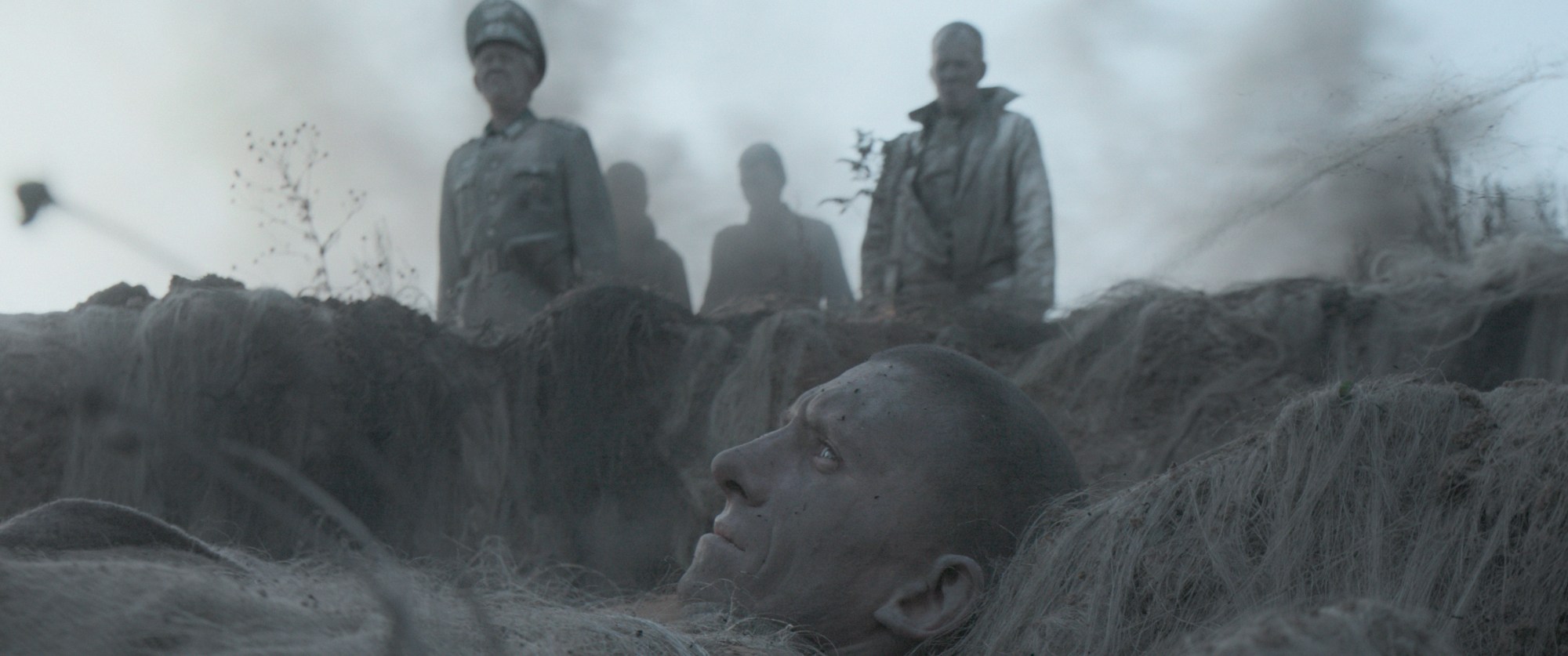
- Festivals
Rotterdam 2022: “Achrome” – the Sound of White
When a filmmaker talks about the human soul as a “disease,” you know you are dealing with complexity. Maria Ignatenko’s second feature, Achrome, which premiered at IFFR’s Tiger Competition, feels as mysterious and deep as its title suggests.
Inspired by Lithuanian author Rūta Vanagaitè’s novel, “The Hours”, about the horror of the Holocaust in the Baltic States, the film follows Maris (Georgiy Bergal), a naïve villager who enlists in the German forces during the Nazi occupation. He is portrayed as an innocent fool who is urged by a spiritual calling.
It’s a strange spiritual calling. It leads Maris to an idyllic house of God that rests amidst an icy Russian landscape. Yet, this church hosts the traditional Christian Orthodox litanies above, but hides the perplexing horrors of war crimes below, in the basement.
Together with Maris, the audience witnesses unspeakable cruelty; cruelty that cannot be clearly seen. Even so, it is ever-present, just like night is the other side of day.
Although the story of a naïve Nazi collaborator was singled out by the film’s producer, Konstantin Fam, Ignatenko took it upon herself to seek a language that could express the story’s intricacies – a language that became an ”amalgamation of reality and sleep.”
Sleep is a recurring theme in Ignatenko’s two features (her debut is titled In Deep Sleep). In this film, however, she went one step further, because here, dreams and reality are no longer separated, they “overflow, one into the other.”
Furthermore, she continues, there is the issue of talking about bygone events. Thinking about this, she came up with the idea that “talking about the past is pretty much the same as talking about the fog.”
Achrome is made of intangible things: sleep, dreams, fog. While dreaming or sleeping, we exist in “a fragile state, a state when something enters into you.”
The intelligent young director turns out to be as puzzling as her film. Yet, her unassuming seriousness reveals an interior wealth that demands to be understood.
In Vanagaitè’s book, there was one particular story of a soldier who joined the German troops, and who later shot himself in the head. His death was mentioned as accidental. When Ignatenko read this, she felt that “we could never know the truth,” and was suddenly overwhelmed by a “frightening compassion” for the anonymous soldier. A “striking understanding” dawned on her, that “people make stories but are not protected by their stories.”
For her, this feeling of compassion and this understanding became a point of personal connection. It was then that she felt compelled to make the movie.
Achrome is so still that at times you think it has stopped. Then, in the shadows, you see an eye blinking or an arm moving, ever so slowly. It is a deliberate, gripping slowness. Could it be that this is the director’s way of embracing, protecting her character?
When she perused the archival materials, she responds, she felt a sort of “helplessness,” that is, “I see it but I don’t really get it, I don’t know it.” Thus, the fog, the unnatural rhythm, the tentative reality, all describe her own relationship to the story. They spell out Ignatenko’s presence within the story.
And so the world she created in order to tell an unknowable story was one without color – achrome. She borrowed the idea from Italian artist Piero Manzoni’s monochromatic boards that become visible only by the folds of the paint on the canvas. When Ignatenko pays close attention to Manzoni’s achrome boards, she realizes that the folds are emerging from “within.” The white is hiding something in it.
Likewise, the white of the film – the snow, the fog, the hazy light – is like a curtain that conceals something from her and from us, something we “cannot grasp,” something that is “not folded in words.”
Colors are just as fleeting as everything else in Achrome. They serve the purpose of “glimpsing into the fog, without being able to penetrate it, to perceive its end.” Sounds, too, “symbolize the white color”.
How does “white sound” sound? It’s high-pitched, similar to tinnitus. It’s so high-pitched, in fact, that the director could not well hear it herself when working on the post-production of the film. “It means [white has] a flickering sound!” She smiles as if telling some clever joke.
White color and white sound, momentary and flickering as fog. A fog that obscures everything. A director who admits knowing nothing. But what is the thing that is concealed? The thing that she is not able to grasp? Is it the devil incarnate, the cause of torture and suffering?
No.
Although Ignatenko does not claim to have the key to any historic truths, she feels that even in the darkest corners of humanity, in the ugliest imprints of its actions, there is a realization of the limitlessness of human manifestation. “The human being is the void and the soul the disease,” she adds obscurely.
“Spiritual life,” she goes on, “takes place independently, whether you are a criminal or not.”
Then, she ties the two concepts together: “A human being is the absolute void that has the potential for the most despicable and the most beautiful things.” The soul is a “soil for morbidity and fear and compassion all at once.” Which way the human being is going to turn… that is not predictable, and cannot be foreseen.